System Sensor CO1224TR Handleiding
System Sensor
Gasmelder
CO1224TR
Bekijk gratis de handleiding van System Sensor CO1224TR (4 pagina’s), behorend tot de categorie Gasmelder. Deze gids werd als nuttig beoordeeld door 82 mensen en kreeg gemiddeld 4.4 sterren uit 41.5 reviews. Heb je een vraag over System Sensor CO1224TR of wil je andere gebruikers van dit product iets vragen? Stel een vraag
Pagina 1/4

CO1224T/CO1224TR
Carbon Monoxide Detector
INSTALLATION AND MAINTENANCE INSTRUCTIONS
3825 Ohio Avenue, St. Charles, Illinois 60174
1-800-SENSOR2, FAX: 630-377-6583
www.systemsensor.com
SPECIFICATIONS
Electrical Specifications
System Voltage Nominal: 12/24 VDC
Min: 10 VDC
Max: 33 VDC
Avg. Standby Current: 20 mA
Max Alarm Current: 40 mA (75 mA test)
Alarm Contact Ratings: 30 VDC @ 0.5 A
Trouble Contact Ratings: 30 VDC @ 0.5 A
Audible Signal (temp 4 tone): 85 dBA min. in alarm (at 10ft)
Max. Start-up Capacitance: 20 uF
Physical Specifications
Operating Temperature Range: 0° to 40°C (32° to 104°F)
Operating Humidity Range: 22 – 90% %RH
Diameter: 6.0˝
Height: 1.25˝
Weight: 7 oz
Wire Gauge Acceptance: 14-22 AWG
NOTICE: This manual shall be left with the owner/user of this equipment.
This product is intended for use in ordinary indoor locations.
GENERAL DESCRIPTION
• Listed to standard 2075
• Round shape allows for mounting in aesthetically demanding areas
• Six-wire, system monitored
• Optional CO detector replacement plate for previously installed detectors
• Local sounder
• Low current draw
• Alarm relay, Form C
• Trouble relay, Form A
• Dual LED’s
• Test/Hush button
• SEMS wiring terminals
• Mount to single gang electrical box or surface mount to wall or ceiling
• Optional drywall anchors included
TABLE 1. DETECTOR OPERATION MODES:
OPERATION
MODE GREEN LED RED LED SOUNDER
Normal
(standby)
Blink 1
per minute OFF OFF
Alarm OFF Temp 4*pattern Temp 4* pattern
Alarm Test OFF Temp 4 pattern Temp 4 pattern
RealTest®
Mode
Blink 1
per second OFF Temp 4 pattern
(after CO is sprayed)
End of Life OFF OFF OFF
CO Trouble OFF Blink 1
per minute OFF
Power Loss/
Cell Fault OFF OFF OFF
Alarm Test: Will send alarm signal to panel.
Hush feature/Alarm Silence: If required, the audible alarm can be silenced
for 5 minutes by pushing the button marked “Test/Hush”. The red alarm light
will continue to flash in temp-4 pattern. If carbon monoxide is still present
after the 5 minute hush period, the audible alarm will sound. The hush facility
will not operate at levels above 350 ppm (parts per million) carbon monoxide.
RealTest® Alarm Silence: Alarm will automatically silence after about 20 sec-
onds of alarm from spraying canned CO into the detector. Alarm Reset: Alarm
automatically resets after CO has cleared from the sensor.
Trouble feature: When the sensor supervision is in a trouble condition (e.g.
such as a sensor that has been tampered with, or the cell itself has prema-
turely dried out due to environmental conditions, etc.), the detector will send
a trouble signal to the panel. The detector must then be replaced. The green
LED turns off and the red LED blinks every minute when the detector is in
trouble.
End of Life Timer feature: When the detector has reached the end of its life,
the trouble contact will open. This indicates that the CO sensor inside the
detector has passed the end of its life and must be replaced. This detector’s
lifespan is approximately ten years from the date of manufacture. The green
LED turns off when the detector is in trouble. Periodically check the “Replace
by” sticker located under the detector cover. The detector must be replaced by
this date. Refer to Detector Replacement on page 3.
Per UL 2075, it is mandatory that a trouble signal be sent to the panel
upon CO cell trouble or cell end of life. Refer to Figure 4 for wiring of the
trouble relay.
I56-3111-012
LIVING
ROOM
BEDROOM BEDROOM
BEDROOM
KITCHEN
TO
BR
CLOSED
DOOR
BASEMENT
GARAGE
CARBON MONOXIDE/SMOKE ALARM
LOCATION FOR MULTI-LEVEL RESIDENCE
–
S0295-01
FIGURE 1. ALARM LOCATION DIAGRAM:
1 I56-3111-012
10-28

INSTALLATION GUIDELINES
Ceiling: Detector should be at least 12 inches from any wall.
Wall: Detector should be at least as high as a light switch, and at least six
inches from the ceiling.
• Do not install in any environment that does not comply with the detec-
tor’s environmental specifications
• Install in accordance with NFPA 720–the Standard for the Installation of
Carbon Monoxide (CO) Detection and Warning Equipment
• As of 2009, NFPA 720 defines standards for both commercial and resi-
dential installations of CO detectors. If the installation can be interpreted
as a commercial application, consult the section of NFPA 720 that out-
lines commercial applications.
• For example, Chapter 5.5.5.3.1 states that carbon monoxide detectors
shall be installed in accordance with manufacturers published instruc-
tions in the following locations:
(1) On the ceiling in the same room as permanently installed fuel burn-
ing appliances
(2) Centrally located on every habitable level and in every HVAC zone of
the building
• If the installation can be interpreted as residential, consult the section of
NFPA 720 that outlines residential applications.
• For example, chapter 9.4.1.1 states that carbon monoxide alarms or
detectors shall be installed as follows:
(1) Outside each separate dwelling unit sleeping area in the immediate
vicinity of the bedrooms
(2) On every level of a dwelling unit, including basements
(3) Other locations where required by applicable laws, codes or standards
MOUNTING
The CO1224T/CO1224TR can be ceiling-mounted or wall-mounted:
1. To a single gang box.
2. Direct mount to ceiling or to wall using drywall fasteners.
INSTALLATION
WIRING INSTALLATION GUIDELINES
All wiring must be installed in compliance with the NFPA 70, National Electrical
Code, applicable state and local codes, and any special requirements of the local
Authority Having Jurisdiction (AHJ).
Proper wire gauges should be used. The conductors used to connect carbon
monoxide detectors to the alarm control panel and accessory devices should
be color-coded to reduce the likelihood of wiring errors. Improper connections
can prevent a system from responding properly in the event of a CO.
The screw terminals in the mounting base will accept 14-22 gauge wire. Wire
connections are made by stripping approximately
1⁄4
˝ of insulation from the
end of the feed wire, inserting it into the proper base terminal, and tightening
the screw to secure the wire in place. Do not put wires more than 2 gauge
apart under the same clamping plate.
WARNING: This product does not have a local audible trouble signal, and
may fail without supervision if trouble loop remains unconnected.
WARNING: Gas detectors on a zone that is bypassed may not signal a trouble
condition. Do not bypass zones used for gas detectors.
Wiring diagrams located on page 4, Figure 4.
WARNING
Remove power from alarm control unit or initiating device circuits before in-
stalling detectors.
1. Using a small, flat head screw driver, push in the small tab located on the
underside of the detector. Once the snap is loosened, lift the bottom end
of the cover up and unhinge the top to remove the cover.
2. Wire the detector base screw terminals per Figure 5.
3. Screw the base of the detector onto a single gang electrical box, or to the
surface of the wall or ceiling. Use the hardware included in the packaging.
4. If mounting with the System Sensor replacement plate model CO-PLATE*:
* Hold replacement plate over desired mounting area.
* Use hook feature to hold CO1224T onto the replacement plate.
* Mount detector and plate together using hardware provided with the
CO1224T.
5. Hinge the top portion of the cover onto the base; with the cover at a 45
degree angle, fit the hinges into the slots of the base.
6. Push the unhinged bottom portion of the cover down until it snaps into place.
7. After all detectors have been installed, apply power to the alarm control unit.
8. Test each detector as described in Testing.
9. Notify the proper authorities that the system is in operation.
CAUTION
Airborne dust particles can enter the detector. System Sensor recommends the
installation of detectors after construction or any other dust producing activ-
ity. Carbon monoxide detectors are not to be used with detector guards unless
the combination has been evaluated and found suitable for that purpose.
TESTING
Detector must be tested after installation.
NOTE: Before testing, notify the proper authorities to avoid any nuisance
alarms.
Ensure proper wiring and power is applied. After power up, allow 80 seconds
for the detector to stabilize before testing.
Test the CO1224T/CO1224TR detector as follows:
1. A test button is located on the detector housing (See Figure 4).
2. Use the tip of your finger to press and hold the test button for 1-4
seconds.
3. If the sounder beeps twice in the Temporal 4 tone and the LED’s light up,
the detector is operational.
4. The detector now enters Realtest speed up test mode indicated by a
quickly blinking green LED. See Functional Gas Test section for instruc-
tions on testing with canned CO.
If a detector fails the above test method, its wiring should be checked. If the
detector still fails after rewiring, it should be replaced.
S0320-00
FIGURE 2. MOUNTING OF DETECTOR:
CO1224T CO1224TR
S0296-01
2 I56-3111-012
10-28

FUNCTIONAL GAS TEST
NOTE: Check with local codes and the AHJ to determine whether or not a
functional gas test is necessary for an installation.
Solo C6 brand canned CO testing agent may be used to verify the detec-
tor’s ability to sense CO by utilizing the RealTest® feature of the CO1224T/
CO1224TR as follows:
1. Press the test button as described in Testing above.
2. Once the alarm has entered the speed-up test mode, indicated by a
quickly flashing green LED, spray a small mount of CO agent within 1/4"
of the alarm’s gas entry ports (see Figure 3). The unit will go into alarm
if gas entry is successful.
3. The detector will automatically exit the speed-up test mode 20-60 sec-
onds after entering speed-up test mode.
Testing the detector will activate the alarm relay and send a signal to the panel.
CAUTION: This carbon monoxide detector is designed for indoor use only. Do
not expose to rain or moisture. Do not knock or drop the detector. Do not open
or tamper with the detector as this could cause malfunction. The detector
will not protect against the risk of carbon monoxide poisoning if not properly
wired. The detector will only indicate the presence of carbon monoxide gas at
the sensor. Carbon monoxide gas may be present in other areas.
This carbon monoxide detector is NOT:
• Designed to detect smoke, fire or any gas other than carbon monoxide
• To be seen as a substitute for the proper servicing of fuel-burning appli-
ances or the sweeping of chimneys.
• To be used on an intermittent basis, or as a portable alarm for the spill-
age of combustion products from fuel-burning appliances or chimneys.
• To be used in airplanes or any other aeronautical vehicle.
Carbon monoxide gas is a highly poisonous gas which is released when fuels
are burnt. It is invisible, has no smell and is therefore impossible to detect with
the human senses. Under normal conditions in a room where fuel burning
appliances are well maintained and correctly ventilated, the amount of carbon
monoxide released into the room by appliances should not be dangerous.
Symptoms of carbon monoxide poisoning: Carbon monoxide bonds to the
hemoglobin in the blood and reduces the amount of oxygen being circulated
in the body. The following symptoms are examples taken from NFPA 720.
They represent approximate values for healthy adults:
Concentration (ppm CO) Symptoms
200 Mild headache after 2-3 hours
of exposure
400 Headache and nausea after
1-2 hours of exposure
800 headache, nausea, and dizziness
after 45 minutes of exposure;
collapse and unconsciousness
after 2 hours of exposure
Many causes of reported carbon monoxide poisoning indicate that while vic-
tims are aware that they are not well, they become so disoriented that they
are unable to save themselves by either exiting the building or calling for as-
sistance. Young children and pets may be the first to be affected.
Per UL standard 2075, the CO1224T/CO1224TR has been tested to the sensi-
tivity limits defined in UL standard 2034.
Alarm thresholds are as follows:
Parts Per Million Detector response time, min.
30 ±3ppm No alarm within 30 days
70 ±5ppm 60-240
150 ±5ppm 10-50
400 ±10ppm 4-15
What to do if the carbon monoxide detector goes into alarm:
Immediately move to a spot where fresh air is available, preferably outdoors.
Find a phone in an area where the air is safe and call your security service
provider. Tell your provider the detector alarm status, and that you require
professional assistance in ridding your home of the carbon monoxide.
IMPORTANT: This detector should be tested and maintained regularly follow-
ing National Fire Protection Association (NFPA) 720 requirements.
MAINTENANCE
Occasionally clean the outside casing with a cloth. Ensure that the holes on
the front of the alarm are not blocked with dirt and dust.
Do not paint, and do not use cleaning agents, bleach, or polish on the detector.
DETECTOR REPLACEMENT
This detector is manufactured with a long-life carbon monoxide sensor. Over
time the sensor will lose sensitivity, and will need to be replaced with a new
System Sensor carbon monoxide detector. This detector’s lifespan is approxi-
mately ten years from the date of manufacture.
Periodically check the detector’s replacement date. Remove the detector cover
and refer to the sticker placed on the inside of the detector. The sticker will
indicate the date that the detector shall be replaced.
This detector is also equipped with a feature that will open the trouble relay
once it has reached the end of its useful life. If this occurs, it is time to replace
the detector.
NOTE: Before replacing the detector, notify the proper authorities that main-
tenance is being performed and the system will be temporarily out of service.
Disable the zone or system undergoing maintenance to prevent any unwanted
alarms. Dispose of detector in accordance with any local regulations.
GAS
ENTRY
PORTS
TEST/HUSH
BUTTON
S0321-00
FIGURE 4. TEST BUTTON LOCATION AND OPERATION:
C01224TR
C01224T
S0298-00
GAS
ENTRY
PORTS
TEST/HUSH
BUTTON
3 I56-3111-012
10-28
Product specificaties
| Merk: | System Sensor |
| Categorie: | Gasmelder |
| Model: | CO1224TR |
| Kleur van het product: | Wit |
| Breedte: | 129 mm |
| Diepte: | 30 mm |
| Hoogte: | 83 mm |
| Stroombron: | DC |
| DC voltage input: | 10 - 33 V |
| Geluidsalarm(en): | Ja |
| Spanning: | 12 - 24 V |
| Ophangsysteem voor aan de muur: | Ja |
| Beste gebruik: | Thuis |
| Koppelbaar: | Ja |
| Bedrijfstemperatuur (T-T): | 0 - 40 °C |
| Relatieve vochtigheid in bedrijf (V-V): | 22 - 90 procent |
| Alarm decibels: | 85 dB |
| Gedetecteerde typen gas: | Koolstofmonoxide (CO) |
| Stroom in standby: | 20 mA |
| Alarmstroom: | 40 mA |
Heb je hulp nodig?
Als je hulp nodig hebt met System Sensor CO1224TR stel dan hieronder een vraag en andere gebruikers zullen je antwoorden
Handleiding Gasmelder System Sensor

14 Juni 2023
Handleiding Gasmelder
- Vemer
- Kidde
- Pentatech
- Sunwind
- Nexa
- Aeroqual
- Protector
- Gewiss
- Schabus
- Popp
- HQ
- Satel
- Deltronic
- Alecto
- WisuAlarm
Nieuwste handleidingen voor Gasmelder
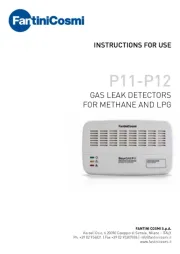
5 Juli 2025
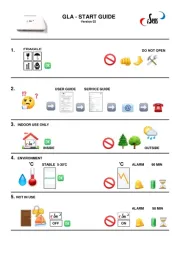
5 Juli 2025
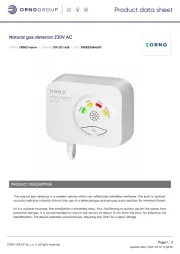
10 Juni 2025
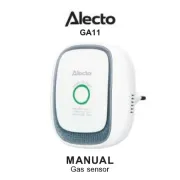
22 Mei 2025
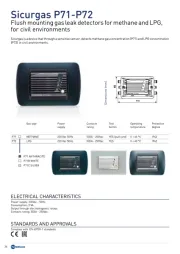
11 Mei 2025

26 Maart 2025
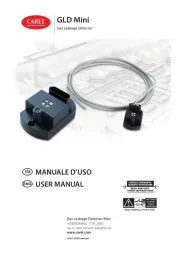
4 Maart 2025
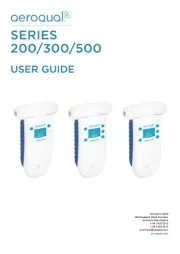
13 December 2024

11 December 2024
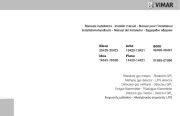
1 December 2024